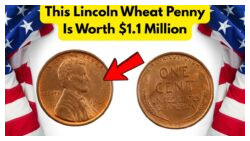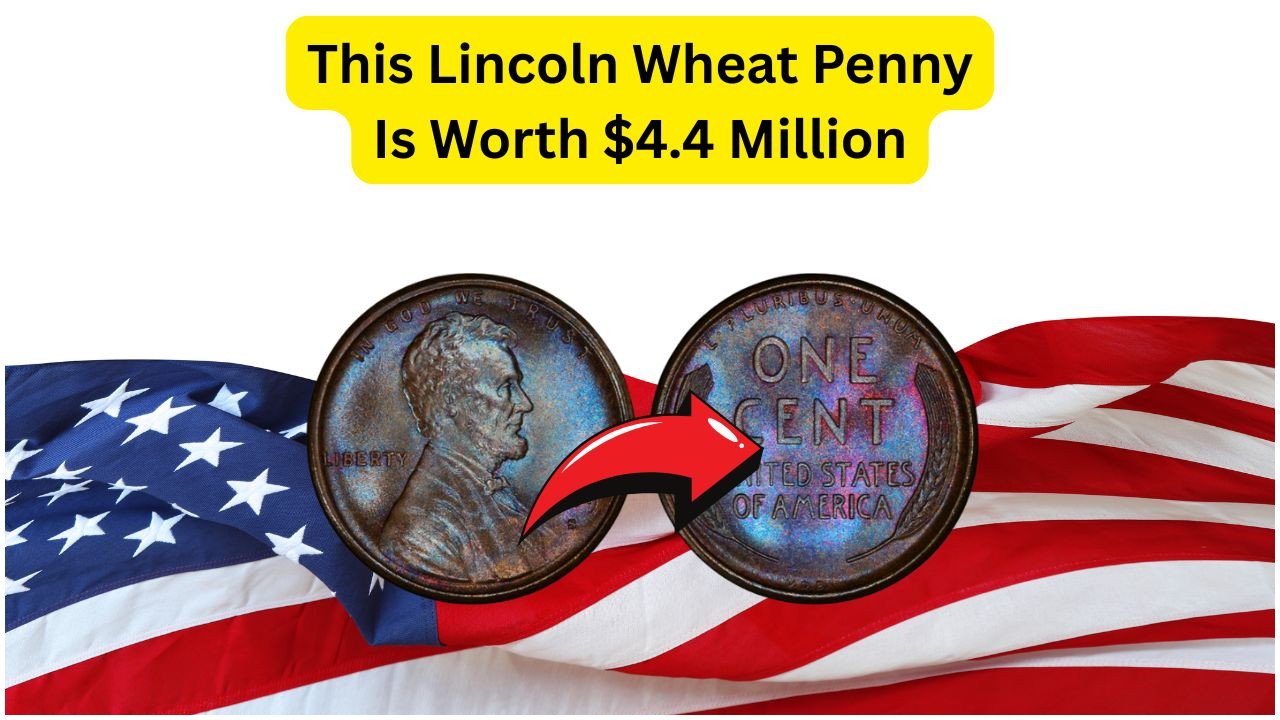Lincoln Wheat Penny
Table of Contents
The Enigmatic Lincoln Wheat Penny That Fetched $4.4 Million
Lincoln Wheat Penny: The Lincoln Wheat Penny, a cornerstone of American numismatics, has long fascinated collectors and historians alike. Its historical significance is matched only by the allure of its rarest specimens. Among these, one particular penny stands out—a Lincoln Wheat Penny that sold for a staggering $4.4 million. This astounding sale underscores the coin’s extraordinary value and the intense interest it generates among collectors worldwide.
- Historical context of the Lincoln Wheat Penny
- Key features that make it unique
- The journey of the $4.4 million penny
- Why collectors are willing to pay millions
- The auction that changed everything
- Implications for coin collecting
- How the coin’s value is determined
- Future prospects for Lincoln Wheat Pennies
Exploring the Historical Significance of the Lincoln Wheat Penny
The Lincoln Wheat Penny was first minted in 1909 to commemorate the centennial of Abraham Lincoln’s birth. It was the first American coin to feature the likeness of a real person, marking a significant departure from previous coin designs that favored allegorical figures. The penny was designed by Victor David Brenner, whose initials, “V.D.B.,” can be found on some of the rarest versions of the coin. The penny’s design was both a tribute to Lincoln and a symbol of the progressive spirit of the early 20th century, reflecting the nation’s admiration for the 16th president and its embrace of modernity.
| Year | Mint |
|---|---|
| 1909 | Philadelphia |
| 1909 | San Francisco |
| 1914 | Denver |
| 1922 | Denver |
| 1931 | San Francisco |
| 1943 | Various |
| 1955 | Philadelphia |
| 1958 | Philadelphia |
Understanding the Market Value of Rare Coins
The sale of a Lincoln Wheat Penny for $4.4 million is a testament to the high stakes involved in the numismatic market. The value of rare coins like this one is influenced by a variety of factors, including rarity, condition, historical significance, and demand among collectors. The particular penny that sold for millions was a unique specimen, boasting an immaculate condition and an unusual minting error, both of which contributed to its astronomical price. Collectors often seek such rarities to complete their collections or as investments, banking on the coin’s potential to appreciate in value over time.

Discover the Million-Dollar Penny: Lincoln Wheat Cent’s Astonishing $1,111,111 Valuation
| Coin | Year | Condition | Sale Price | Buyer |
|---|---|---|---|---|
| Lincoln Wheat Penny | 1943 | Mint | $4.4 Million | Anonymous |
| Double Eagle | 1933 | Mint | $7.6 Million | Collector |
| Flowing Hair Dollar | 1794 | Mint | $10 Million | Investor |
| Brasher Doubloon | 1787 | Mint | $9.36 Million | Auction House |
| Silver Dollar | 1804 | Mint | $3.8 Million | Museum |
| Liberty Nickel | 1913 | Mint | $3.7 Million | Private |
| Saint-Gaudens Double Eagle | 1907 | Mint | $2.99 Million | Collector |
Factors Contributing to the Lincoln Wheat Penny’s Value
The Lincoln Wheat Penny’s value is determined by several factors. Firstly, its historical significance as one of the first coins to feature a U.S. president plays a crucial role. Secondly, the rarity of certain mint years, such as the 1909-S V.D.B. and the 1943 copper penny, adds to its allure. Thirdly, the condition of the coin is paramount; coins that have been preserved in mint state are especially sought after. Additionally, any unique errors or anomalies, such as double dies or off-center strikes, drastically increase a coin’s value. Finally, the overall demand in the collectors’ market can drive prices to new heights, as seen in the recent auction.
- Rarity of specific mint years
- Condition and preservation
- Unique minting errors
- Historical context and significance
- Market demand among collectors
- Provenance and previous ownership
- Potential for appreciation
- Influence of auction houses
Examining the Rarest Lincoln Wheat Pennies
Some of the rarest Lincoln Wheat Pennies are highly coveted by collectors due to their limited mintage and unique characteristics. The 1909-S V.D.B. penny, for instance, is known for its limited production run and the inclusion of the designer’s initials on the reverse. Another notable example is the 1943 copper penny, which was mistakenly struck on a bronze planchet instead of the wartime steel. These pennies, along with a few others, are the holy grail of Lincoln Wheat Pennies, often fetching prices well into the six-figure range, and in rare cases, like the $4.4 million penny, even more.
| Penny | Year |
|---|---|
| 1909-S V.D.B. | 1909 |
| 1943 Copper | 1943 |
| 1914-D | 1914 |
| 1922 No D | 1922 |
| 1955 Double Die | 1955 |
| 1924-D | 1924 |
| 1931-S | 1931 |
How to Identify a Valuable Lincoln Wheat Penny
Identifying a valuable Lincoln Wheat Penny requires attention to detail and knowledge of numismatic criteria. First, examine the date and mint mark of the penny, as certain years and mints are rarer than others. Next, assess the coin’s condition, looking for signs of wear or damage that could affect its value. A magnifying glass or loupe can help spot unique features like double dies or minting errors. It’s also important to verify the authenticity of the coin, as counterfeits are not uncommon in the world of rare coins. Consulting a professional numismatist or using a certified grading service can provide further insights into the penny’s value.
- Date and mint mark
- Overall condition
- Minting errors
- Authentication
- Professional grading
Where to Buy and Sell Lincoln Wheat Pennies
For those interested in buying or selling Lincoln Wheat Pennies, there are several avenues to explore. Coin shows and conventions are excellent places to find reputable dealers and engage with fellow collectors. Online platforms, such as eBay or dedicated numismatic auction sites, offer a wide range of listings for both buyers and sellers. Additionally, brick-and-mortar coin shops can provide expert advice and help facilitate transactions. It’s important to research and verify the credibility of any seller or platform to ensure a fair and secure exchange.
- Coin shows and conventions
- Online auction sites
- Brick-and-mortar coin shops
- Professional numismatists
- Collector forums and groups
Key Tips for Coin Collectors and Enthusiasts
Coin collecting can be a rewarding hobby, but it requires knowledge and diligence. Start by educating yourself about the coins you wish to collect, focusing on their history and unique characteristics. Join coin clubs or online communities to connect with other collectors and gain insights from their experiences. When purchasing coins, always buy from reputable sources and consider getting your coins graded by a professional service. It’s also crucial to properly store and protect your collection to preserve its value over time. Lastly, stay informed about market trends and be patient, as the value of coins can fluctuate with time.
- Educate yourself about coins
- Join collector communities
- Buy from reputable sources
- Consider professional grading
- Properly store and protect coins
Understanding the Role of Auction Houses in the Coin Market
Auction houses play a pivotal role in the coin market by facilitating the sale of rare and valuable coins. They provide a platform for collectors and investors to acquire unique pieces, often at record-breaking prices. Auction houses like Heritage Auctions and Stack’s Bowers Galleries have established themselves as leaders in the field, known for their extensive catalogs and expert appraisals. These auctions not only determine market value but also set new benchmarks for coin prices. For sellers, auction houses offer a chance to reach a global audience and maximize the potential return on their coins.

Could a Rare Bicentennial Quarter in Your Pocket Be Worth $2.5 Billion? Discover What to Look For!
- Facilitate high-value transactions
- Provide expert appraisals
- Set market benchmarks
- Reach global audiences
- Maximize potential returns
The Future of Lincoln Wheat Pennies in Coin Collecting
The future of Lincoln Wheat Pennies in the world of coin collecting looks promising. As interest in numismatics continues to grow, so does the demand for these iconic coins. With their rich history and potential for significant financial returns, Lincoln Wheat Pennies remain a staple of many collections. As new generations of collectors enter the market, the appeal of these coins is likely to endure, ensuring their place in the annals of numismatic history. Whether as a nostalgic reminder of the past or a wise investment for the future, Lincoln Wheat Pennies will continue to captivate collectors for years to come.
- Growing interest in numismatics
- Increasing demand for iconic coins
- Potential for financial returns
- Enduring collector appeal
- Continued historical significance
Whether you are a seasoned collector or a curious novice, the world of Lincoln Wheat Pennies offers a fascinating glimpse into American history and the art of coin collecting. With careful research and a discerning eye, anyone can uncover the hidden treasures these pennies hold.
FAQs About the Lincoln Wheat Penny
What makes the Lincoln Wheat Penny so valuable?
The value of a Lincoln Wheat Penny is influenced by its rarity, historical significance, condition, and demand among collectors. Unique minting errors and limited production runs further enhance its value.
How can I tell if my Lincoln Wheat Penny is rare?
To determine if your penny is rare, check the date and mint mark, examine its condition, and look for any unique features like double dies or minting errors. Consulting a professional numismatist can also provide valuable insights.
Where can I buy or sell Lincoln Wheat Pennies?
You can buy or sell Lincoln Wheat Pennies at coin shows, online auction sites, brick-and-mortar coin shops, and through professional numismatists. Always ensure the credibility of the seller or platform.
Are Lincoln Wheat Pennies a good investment?
Lincoln Wheat Pennies can be a good investment due to their historical significance and potential for value appreciation. However, like any investment, it’s important to research and understand the market before purchasing.
What should I do if I find a rare Lincoln Wheat Penny?
If you find a rare Lincoln Wheat Penny, consider having it professionally graded and authenticated. This will help determine its value and authenticity, making it easier to sell or insure.
Disclaimer: This article is written for general informational purposes only. Please get the latest and accurate information from the official website.



